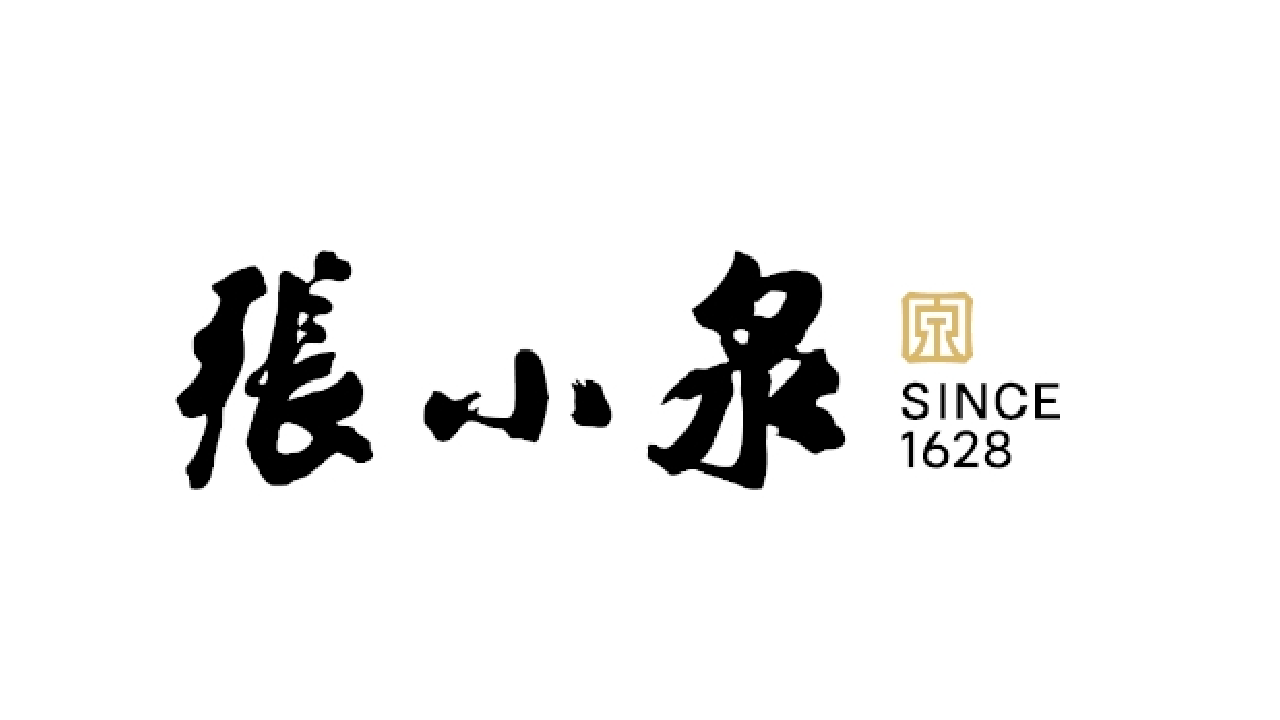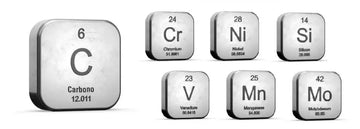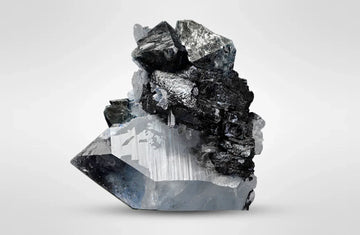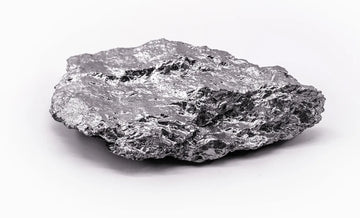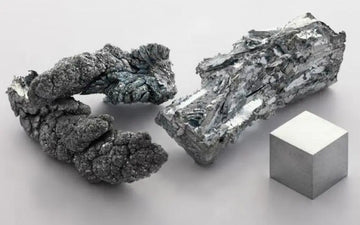In my grandfather's house, there hung an old knife on the kitchen wall. It had cut thousands of meals, its edge worn thin by years of sharpening. "This knife has memories," he would say. What he didn't know was that his knife also had secrets—hidden elements mixed into the steel that gave it life, character, and endurance.
Modern Steel kitchen knives are like small villages where different elements live together. Iron is the majority, the common folk making up most of the population. Carbon is the respected elder, small in number but mighty in influence. But there are other special residents—chromium, molybdenum, and vanadium—each bringing unique gifts that transform an ordinary piece of metal into something that can slice through a tomato so thin you can see through it.
| Property | Primary Contributing Elements | Impact |
|---|---|---|
| Hardness | Carbon, Vanadium | Determines how well the knife resists deformation and maintains its shape |
| Edge Retention | Vanadium, Carbon, Molybdenum | Affects how long the knife stays sharp during use |
| Corrosion Resistance | Chromium | Prevents rusting and staining in kitchen environments |
| Toughness | Molybdenum | Reduces brittleness and prevents chipping |
| Ease of Sharpening | Carbon (balance) | Higher carbon can make steel harder to sharpen but hold an edge longer |
Kitchen Knife Steel Composition: The Hidden Village Inside Your Blade
Every knife contains a world within itself. The steel is mostly iron—about 90% or more—with a small amount of carbon (between 0.1% and 2%). Without the right mix of additional elements and proper heat treatment, the knife would be as useless as a paper sword in rain.
These elements create a delicate balance of qualities. A knife that's too hard might keep its edge longer but break when dropped. One that's too soft might bend rather than break but will need constant sharpening. Knife makers measure this hardness using something called the Rockwell Hardness Scale (HRC). Good knives usually fall between 55-60 HRC. Japanese knives tend to be harder (around 60), requiring more care but staying sharp longer. German knives are often softer (around 55), needing less babysitting but more frequent sharpening.

Understanding Kitchen Knife Steel Markings
The strange codes on knife packaging might look like a secret language, but they actually tell you what's inside your knife. Take X50CrMoV15, for example:
- "X" means it's stainless steel
- "50" tells you there's 0.50% carbon
- "Cr" reveals chromium is present
- "Mo" indicates molybdenum
- "V" stands for vanadium
- "15" means there's 15% chromium

These markings are like the ingredients list on food packaging, telling you what's inside before you buy.
Chromium in Kitchen Knives: The Element That Fights Rust

Chromium is the guardian that protects your knife from the elements. When steel contains at least 13% chromium, something remarkable happens—it becomes "stainless" steel, resistant to the rust and stains that would otherwise quickly claim a blade in the wet world of a kitchen.

But chromium does more than fight rust. It also makes the knife harder and helps it keep its edge longer. In good knife steel like X50CrMoV15, chromium makes up about 15% of the mix, providing both protection and strength.
Is Chromium in Kitchen Knives Safe?
Some people worry about chromium in their knives. It's true that one form of chromium—hexavalent chromium (Cr6+)—can be harmful. But the chromium in your knife is generally locked tightly in the steel, and even if tiny amounts were to transfer to food, it would typically be in the trivalent form (Cr3+), which your body actually needs as a nutrient. When steel chromium encounters stomach acid, it forms the helpful kind, not the harmful kind.

Molybdenum in Kitchen Knives: The Element That Adds Strength

If iron is the body of the knife and chromium is its shield, then molybdenum is its backbone. This element (pronounced mo-lib-de-num) strengthens the steel in ways that aren't immediately visible but become apparent through years of use.

When added at around 0.8% (as in X50CrMoV15 steel), molybdenum brings several gifts:
- It enhances the rust resistance that chromium provides
- It makes the blade more durable overall
- It increases hardness and resistance to wear
Molybdenum is particularly valuable when you're cutting tough items or using the knife for extended periods. It creates a finer grain structure within the steel, helping the edge remain stable and sharp through thousands of cuts.
Vanadium in Kitchen Knives: The Element That Keeps Edges Sharp

Vanadium might be present in smaller amounts than the others—about 0.2% in standard knife steel—but its effect is anything but small. Think of vanadium as the teacher who trains the other elements to maintain their discipline.
Vanadium's main contributions to your knife include:
- Dramatically improved edge retention
- Enhanced resistance to wear
- Formation of hard particles (carbides) that help the blade endure

In premium knives focused on extreme edge retention, vanadium content can be much higher. Some specialized steels contain 4-10% vanadium, creating blades that stay sharp through seemingly endless use but can be challenging to resharpen when they eventually dull.
Vanadium Carbides in Kitchen Knife Steel
Inside the steel, vanadium forms incredibly hard particles called carbides. These are like tiny islands of diamond-like hardness scattered throughout the metal. When your knife edge meets a cutting board repeatedly, these hard particles stand firm while softer material around them might wear away. This is why high-vanadium knives maintain their edge through months of daily use.
Kitchen Knife Alloy Performance: German vs. Japanese Steel Approaches
Different combinations of these elements create distinct personalities in knives, much like different upbringings produce different characters in people.
German Steel Kitchen Knife Properties
German knives typically contain moderate amounts of chromium (around 15%), some molybdenum, and minimal vanadium. This creates a balance favoring toughness and corrosion resistance. These knives are like reliable friends who may not be extraordinary in any single way but rarely let you down. They're forgiving of rough handling, resist rust well, and are relatively easy to maintain, though they need more frequent sharpening.

Japanese Steel Kitchen Knife Properties
Japanese knives often incorporate higher carbon content and sometimes more vanadium, prioritizing extreme sharpness and edge retention. They're like talented but sensitive artists—capable of extraordinary performance but requiring more careful handling. Their edges can be dramatically sharper and last longer, but they may chip if used improperly and demand more attention to prevent corrosion.

Kitchen Knife Edge Retention vs. Ease of Sharpening
The balance of elements creates important trade-offs in performance. Higher vanadium content typically means your knife will stay sharp longer—sometimes dramatically longer—but when it eventually dulls, it will require more effort and skill to resharpen. The very same hard carbides that help the edge endure resist the abrasion needed to form a new edge.

Knives with more moderate alloy compositions might not stay sharp as long but can be quickly restored with standard sharpening tools. This is why professional chefs often keep both types in their collection—high-maintenance, extreme-performance knives for precision work, and more forgiving blades for rough tasks.
Kitchen Knife Corrosion Resistance: How Alloys Protect Your Blade
Chromium content above 13% provides the stainless properties essential in kitchens. Molybdenum enhances this resistance, particularly against stronger food acids like those in tomatoes or citrus. However, even "stainless" steel requires proper care and drying to prevent potential corrosion over time.
The level of protection varies with the exact composition. A knife with 15% chromium and added molybdenum (like many German knives) might forgive being left wet for a short time, while a high-carbon Japanese knife with just enough chromium to qualify as "stainless" might develop spots if not dried promptly after use.
Kitchen Knife Maintenance Based on Alloy Type
Different alloy compositions create different maintenance demands:
Knives with higher chromium generally need less immediate attention after use, as they resist corrosion even when left briefly damp. However, all kitchen knives benefit from prompt cleaning and drying regardless of composition.
Vanadium-rich steels stay sharp longer but require more sophisticated sharpening when maintenance is eventually needed. The harder carbides formed by vanadium often need diamond stones or other specialized sharpening tools to reshape effectively.
Most importantly, the alloy composition affects how the knife responds during sharpening. Softer German-style alloys typically form a workable burr quickly, while harder, vanadium-rich Japanese knives may require more technique and time to sharpen properly.
Choosing the Right Kitchen Knife Alloy for Your Cooking Style
There is no "perfect" knife for everyone, just as there is no perfect person for every job. The ideal alloy mix depends on your priorities and habits in the kitchen.
For everyday home cooking with varied tasks and possibly inconsistent maintenance, moderate alloy steels like X50CrMoV15 with balanced chromium, molybdenum, and vanadium content offer excellent performance without extreme maintenance demands. These are like reliable friends who perform well in most situations without requiring special treatment.

For precision tasks requiring exceptional edge retention—like preparing sushi or detailed garnishes—higher-vanadium steels may justify their additional maintenance requirements. These specialized tools excel at specific tasks but ask more of their owners in return.
Understanding these alloy elements is like understanding the personalities of potential friends. It helps you choose knives that match your particular needs, cooking style, and maintenance habits, ultimately making your time in the kitchen more enjoyable through tools that work with you rather than against you.
Based on the images showing questions about vanadium, molybdenum, and chromium in steel, here are 10 questions most relevant to kitchen knife buyers with concise answers:
FAQs
Why is chromium added to steel in kitchen knives?
Chromium is added to create stainless steel, providing essential corrosion resistance in wet kitchen environments. At concentrations above 13%, it prevents rusting and staining while also increasing hardness.
What does vanadium do in steel kitchen knives?
Vanadium significantly improves edge retention by forming hard carbides that resist wear. It allows knives to stay sharp longer, particularly useful for professional chefs who need minimal maintenance during service.
Why add molybdenum to steel knives?
Molybdenum enhances strength and durability, particularly at the cutting edge. It improves corrosion resistance beyond what chromium alone provides and increases edge stability during heavy cutting tasks.
Does chromium steel rust?
Steel with sufficient chromium (13%+) is highly rust-resistant but not rustproof. Even stainless steel knives can eventually develop spots if left wet for extended periods, though they're much more forgiving than carbon steel.
What is high chromium steel used for?
High chromium steel (15-18%) is used for premium stainless kitchen knives that require excellent corrosion resistance in wet environments while maintaining good edge retention, particularly for saltwater exposure or acidic foods.
Is molybdenum steel safe?
molybdenum in steel kitchen knives is completely safe. It's tightly bound in the metal matrix and does not leach into food in any significant amount during normal use.
Can you weld chrome molybdenum steel?
Yes, but it's rarely relevant for kitchen knives as welding is not typically used in knife repairs. Professional knife makers can weld it using specialized techniques if needed for custom fabrication.
How strong is chrome vanadium steel?
Chrome vanadium steel offers an excellent strength-to-weight ratio with a typical hardness of 58-61 HRC in kitchen knives. It resists deformation and maintains its cutting edge under significant use.
What is chrome molybdenum steel used for?
Chrome-moly steel creates high-performance chef's knives that balance excellent corrosion resistance with superior edge stability and strength. It's particularly valued in professional kitchens for its durability during prolonged use.
Is chromium steel magnetic?
Most kitchen knives with chromium are still magnetic, though high-chromium austenitic stainless steels (like some 300-series) can be less magnetic. This can be useful for magnetic knife strips in kitchens.
